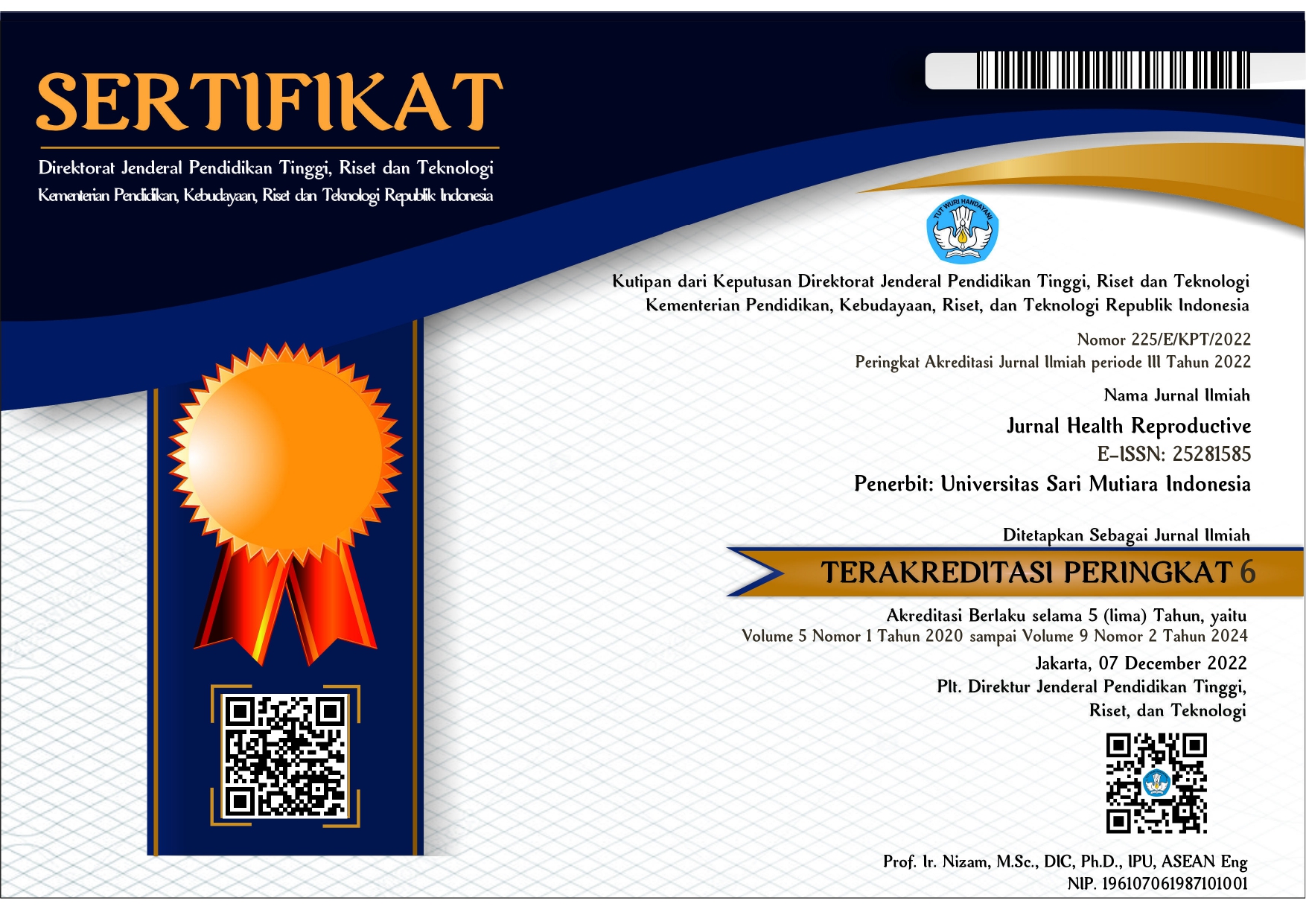FAKTOR-FAKTOR YANG MEMPENGARUHI KEJADIAN EMESISGRAVIDARUM PADA IBU HAMIL TRIMESTER 1 DI RUMAH BERSALIN HASNA DEWI PEKANBARU
Keywords:
Determinant, emesisgravidarum, pregnant first trimesterAbstract
Emesisgravidarum is one early signs of pregnancy 70 % pregnant woman had nausea and 28 % have been vomiting. Emesisgravidarum so often ignored because regarded as a consequence normal and physiological symptoms of a pregnancy , if they were seen from the other side emesisgravidarum make the negative impact for pregnant women and families. The purpose of this research is to analyze determine of emesisgravidarum for pregnant women in first trimester which parity, employment, pregnant knowledge, the use of contraceptive pill before pregnancy, and woman with the history of emesisgravidarum. The study type was analytical with cross-sectional approach. The Population in this study all of pregnant women first trimester visiting Maternity Homes Hasna Dewi in October – December 2015 (135 people), and samples 100 people using purposive sampling technique. The instrument used is questionaire. Data was analyzed by univariate analysis , bivariate analysis ( chi-square ) and multivariate analysis. Results of the study were calculated using statistical test Chi-Square showed all the factors influencing the emesisgravidarum among others, parity (P value 0.000), pregnant employment status (P Value 0.012), pregnant knowledge (P value 0.000), the use of contraceptive pill before pregnancy ( P value 0.011) and the history of emesisgravidarum ( P value 0.031). From the multivariate analysis of several factors which are the most dominant factor affecting the emesisgravidarum were parity (P value 0,052) OR 403,708. The midwife in antenatal care most considere all of the factor emesisgravidarum have to take care provided on and quality care.
Downloads
References
Cambel. S, Kehamilan hari demi hari. Jakarta: Erlangga; 2005.
Fell.D.B, et al. Risk factors for hyperemesis gravidarum requiring hospital admission during pregnancy. Journal of American College of Obstetricins and Gynecologists.2006;(107)2:277-84. (diunduh 23 Februari 2016).
Fitrah. Karakteristik ibu hamil yang mengalami hyperemesisgravidarum di Ruang camar III RSUD Arifin Achmad Pekanbaru: 2009
Goodwill. T.M. et.al. The role of chorionic gonadotropin in transient hyperthyroidism of hyperemesis gravidarum. Diakses dari http://jcem.endojournals.org. Diunduh 18 februari 2016.
Ningsih. Sembilan bulan yang menakjubkan. Yogyakarta: Medical Book; 2012.
Sastroasmoro S, Ismael S. Dasar-dasar metodologi penelitian klinis. Jakarta: Sagung Seto; 2008.
Satari MH, Wirakusumah FF. Konsistensi penelitian dalam bidang kesehatan. Bandung: Refika Aditama; 2011.
Smith. Mengatasi mual-mual dan gangguan lain selama kehamilan. Jakarta : Diglosia; 2007
Stoppard. Buku pintar kehamilan dan persalinan modern. Yogyakarta: Panduan praktis bagi calon orang tua; 2008
Sumai.E, et al. Faktor-faktor yang berhubungn dengan kejadian emesisgravidarum di Rumah sakit umum daerah dr. Sam Ratulangi Tondano kabupaten minahasa Sulawesi Utara. Jurnal ilmiah bidan. 2014:(2)1:61-65
Tiran.D. Mual dan muntah kehamilan: seri asuhan kehamilan. Jakarta: EGC; 2004
Woolfson. Mual dan Muntah dalam khamilan. Jakarta: EGC; 2008.
Wadud. Hubungan umur dan pekerjaan ibu dengan kejadian hyperemesisgravidarum di instansi kebidanan rumah sakit muhammadiyah Palembang. Palembang: 2012.











.png)
